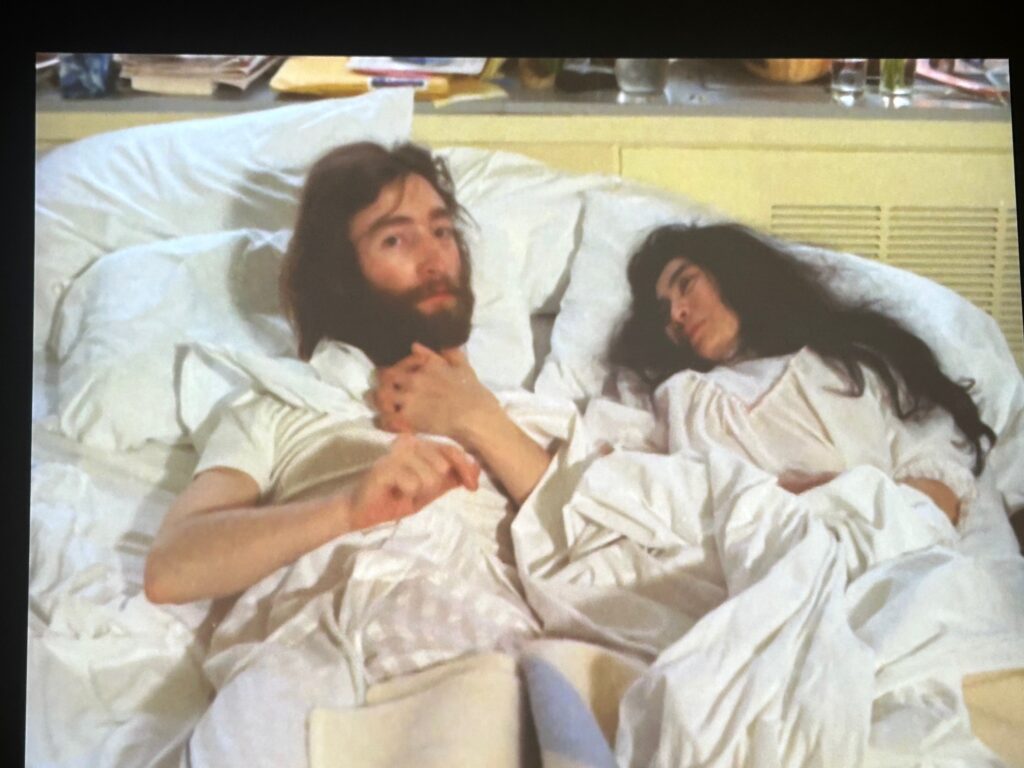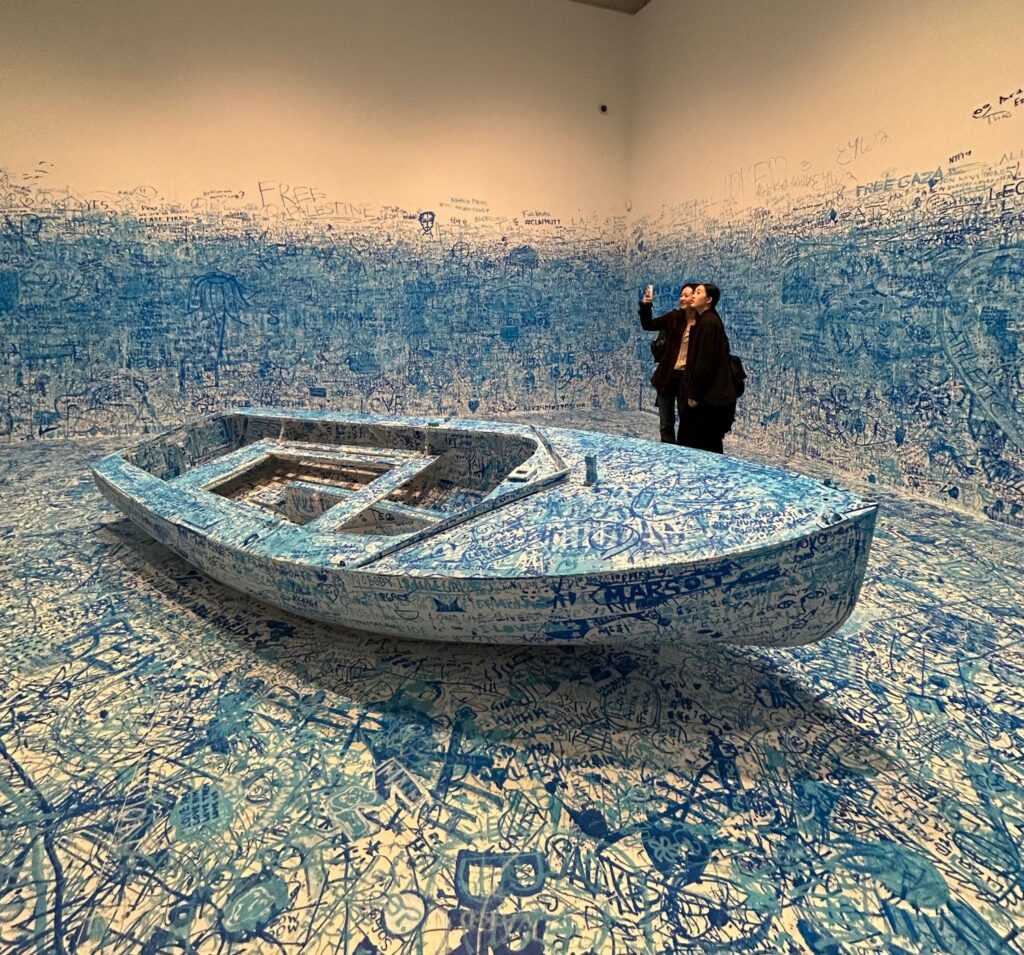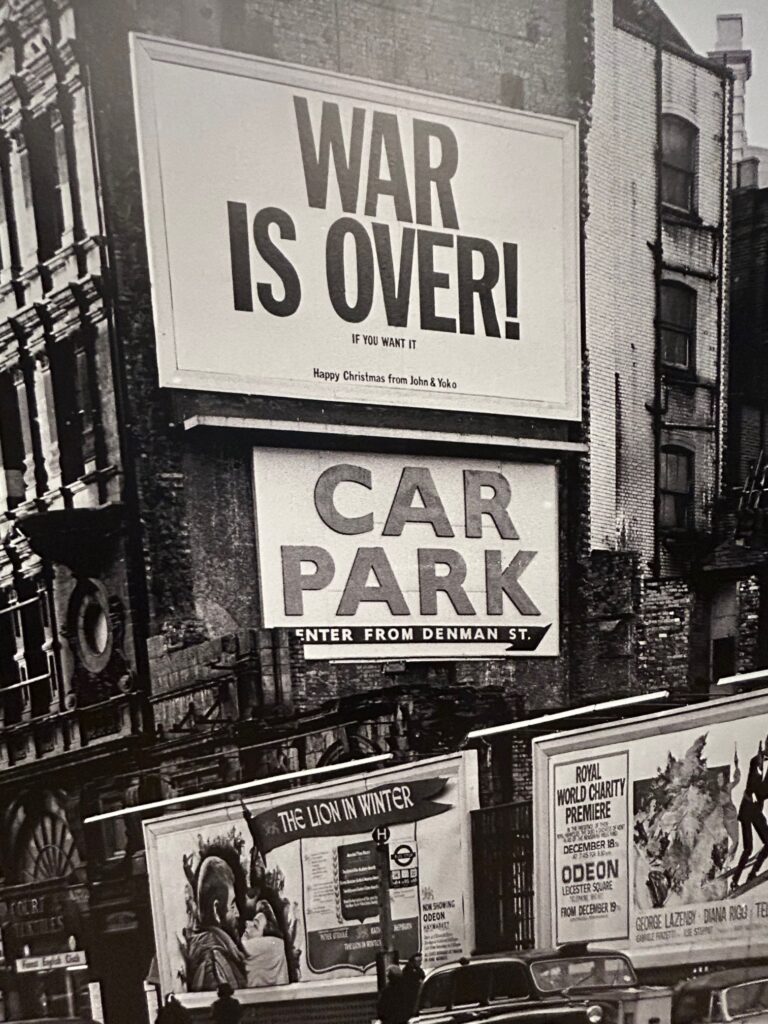Yoko Ono: Music of the Mind, a major new Yoko Ono retrospective at Tate Modern, covers a period of more than seven decades, and is the UK’s largest exhibition celebrating key moments of her influential and visionary career as a multi-disciplinary artist, musician and peace campaigner.
Music of the Mind traces the development of Ono’s practice and explores some of her most talked about and powerful artworks and performances including Cut Piece (1964), where people were invited to cut off her clothing, and her banned Film No.4 (Bottoms) (1966-67) which she created as a ‘petition for peace’. Music of the Mind invites visitors to interact with Ono’s conceptual works such as ‘Wish Trees for London’, where visitors can contribute personal wishes for peace.

Yoko Ono was born in Japan and developed her practice in the United States and later in London, where she met her future husband and creative collaborator John Lennon. The Tate Modern exhibition features more than 200 artworks that demonstrate Ono’s visionary approach to art and language, including instruction pieces, scores, installations, films, music and photography.
Ono is too often discussed in the context of her marriage to John Lennon and dismissed as the woman who broke up The Beatles, without reference to her incredible accomplishments as a trailblazing conceptual artist. Ono is one of the most important women artists of the past few decades, a pioneer of conceptual, participatory and performance art in a similarly ground-breaking way to the other Grand Dame of conceptual art – Marina Abramovic.
So the retrospective at Tate Modern feels long overdue, and provides a unique chance to experience some of her seminal conceptual and performative artworks, and get an insight into her musical back catalogue, her artistic practice and ongoing campaign for world peace.
The timing of this exhibition seems particularly poignant and emotional – two years since Russia invaded Ukraine, while war rages in Sudan and Gaza. It feels like a dark time for humanity as conflicts rage around the world. Yoko Ono is no stranger to war, for she experienced it first-hand during her childhood in Japan during World War II, a deadly conflict that ended with nuclear bombs destroying Hiroshima. Ono and her family left Japan to escape the war, but the memories never left her and had a huge impact on her artistic oeuvre and her role as a peace activist in later life.
She was an adult in the 1970s when she staged a “Bed-in” peace protest with John Lennon, as a protest against the US war with Vietnam, asking that we “Give Peace a Chance”. Yet here we are decades later, and it seems that humanity hasn’t learnt from its mistakes. And as always it’s the innocents whose lives are destroyed, who are displaced or killed, while those in power seem either apathetic or powerless to promote peace and unity.

Music of the Mind presents a rare opportunity to watch footage of some of Ono’s seminal performance pieces, such as a striking film of her 1964 ‘Cut Piece’, which shows people gradually cutting off her clothes with a pair of scissors and capturing the discomfort on her face as a man cuts the straps of her bra. ‘Cut Piece’ has similarities with Marina Abramovic’s legendary 1974 Naples performance ‘Rythmn O’, which left the artist traumatised when male members of the audience terrorised her. There are definitely parallels between Abramovic and Ono, and it’s interesting that both women have been given long overdue retrospectives at major arts institutions within a few months of each other.
However, the Yoko Ono exhibition is generally a more serene and peaceful experience than Abramovic’s recent retrospective at the Royal Academy of Arts. Whilst both women are trailblazers of performance art, the Yoko Ono exhibition feels more like an anti-war protest and a document of her dedication to promoting peace. Visitors are invited to play each other at chess on a series of chess tables arranged in one gallery, adjacent to a screen showing Ono and Lennon’s iconic 1969 ‘Bed-in for peace’ protest in Montreal. There are floor cushions where people can relax and listen to Ono, Lennon and the Hare Krishna’s sing ‘All we are saying is give peace a chance’, in peaceful protest against the Vietnam War. Visitors to the exhibition can also take part in ‘Shadow Peace’, hammer nails into a wall, or write anti-war slogans on the wall in a white room with a rowing boat in the centre.
My favourite room of the exhibition is titled ‘Surrender to Peace’ and brings together Ono’s works from the mid-1960s to 2009, revealing her use of the sky as a metaphor for freedom and limitlessness. Through her artistic practice, Ono has been on a lifelong mission to heal the self and the world with a message of peace.

In 1983 she placed an advert in the New York Times titled ‘Surrender to Peace’, which is sadly just as appropriate now as it was 4 decades ago. She wrote “Our purpose is not to exert power, but to express our need for unity despite the seemingly unconquerable differences. We as the human race have a history of losing our emotional equilibrium when we discover different thought patterns in others. Many wars have been fought as a result. It’s about time to recognize that it is all right to be wearing different hats, as our heartbeat is always one.”
Concepts of trauma and healing are at the heart of Ono’s artwork. Since her family fled the bombing of Tokyo during the Second World War, she found comfort in the sky above, remembering that “Even when everything was failing apart around me, the sky was always there for me…I can never give up on life as long as the sky is there.”

A powerful installation in the Tate exhibition encapsulates Ono’s anti-war stance and invites people to see the world from a different perspective: ‘A HOLE’ is a huge pane of glass with a bullet hole through the centre, with an invitation from the artist to ‘Go to the other side of the glass and see through the hole.’ Maybe there is a lesson we can all learn from Yoko Ono, to look at the world from a different perspective, and view it from the other side of glass so that we can find some sense of unity and harmony.
Yoko Ono: Music of the Mind is at Tate Modern until 1st September, 2024: https://www.tate.org.uk/whats-on/tate-modern/yoko-ono




